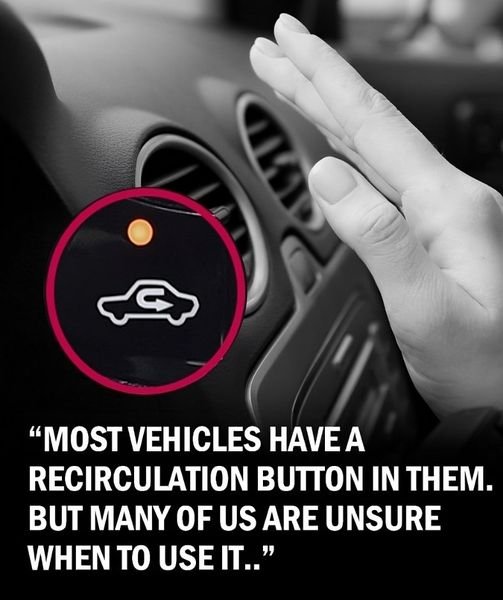If you’ve ever noticed the recirculation button in your car—often identified by an icon of a vehicle with a circular arrow inside—you might have wondered when and why you should use it. Despite being a common feature in most vehicles, many drivers are unsure of its purpose and the benefits it offers. Understanding how and when to use this button can improve your driving comfort and even enhance your vehicle’s efficiency.
What Does the Recirculation Button Do?
The recirculation button controls whether the air inside your car is drawn from outside or recirculated within the cabin. When the button is activated, it closes the outside air intake, meaning the air conditioner or heater will circulate the air that’s already inside the vehicle rather than pulling in fresh air from outside.
This feature can be particularly useful in certain driving conditions, as it allows you to control the quality of the air inside the car and can make your HVAC system work more effectively.
When to Use the Recirculation Button
- Hot Days and Air Conditioning
One of the best times to use the recirculation button is on a hot day when you’re running the air conditioning. When the button is engaged, the air conditioner doesn’t have to cool the hot air from outside repeatedly. Instead, it recirculates the already cooled air inside the car, helping to maintain a lower temperature more efficiently. This can result in quicker cooling times and reduced strain on your vehicle’s air conditioning system, which can also save fuel.
- Cold Days and Heating
Similarly, during cold weather, using the recirculation button can help the heater warm the cabin faster. By recirculating the already heated air, the system doesn’t need to warm up cold air from outside continually. This can make your car more comfortable more quickly, especially on chilly mornings.
- Driving Through Polluted Areas
If you’re driving through areas with poor air quality—such as a smoky environment, heavy traffic, or near industrial zones—using the recirculation button can prevent polluted air from entering your vehicle. This is especially important if you or your passengers are sensitive to allergens, pollutants, or strong odors.
- Avoiding Unpleasant Smells
Whether you’re driving through a tunnel, near a landfill, or passing by a farm, there are times when the outside air may carry unpleasant odors. In such situations, pressing the recirculation button can help keep those smells out of the cabin, maintaining a more pleasant atmosphere inside your car.
When Not to Use the Recirculation Button
- Preventing Fogged Windows
One of the main times to avoid using the recirculation button is when your windows start to fog up. Recirculating the air inside the vehicle increases humidity, which can lead to condensation on the windows. In these cases, it’s better to turn off the recirculation and allow fresh air from outside to enter, which can help clear the fog and improve visibility.
- Long Drives
On long drives, it’s usually a good idea to switch off the recirculation mode periodically to allow fresh air into the cabin. Continuously recirculating the same air can lead to a buildup of carbon dioxide, which might cause drowsiness or discomfort over time. Letting in fresh air ensures better oxygen levels inside the car, keeping you alert and comfortable.
Conclusion
The recirculation button is a simple yet powerful feature that can make your driving experience more comfortable and efficient. By understanding when and why to use it, you can keep your car’s interior temperature regulated, avoid unpleasant odors, and protect yourself from polluted air. However, it’s also important to know when not to use it to avoid issues like fogged windows or stale air. With the right use of this button, you can enhance your comfort and safety every time you hit the road.



